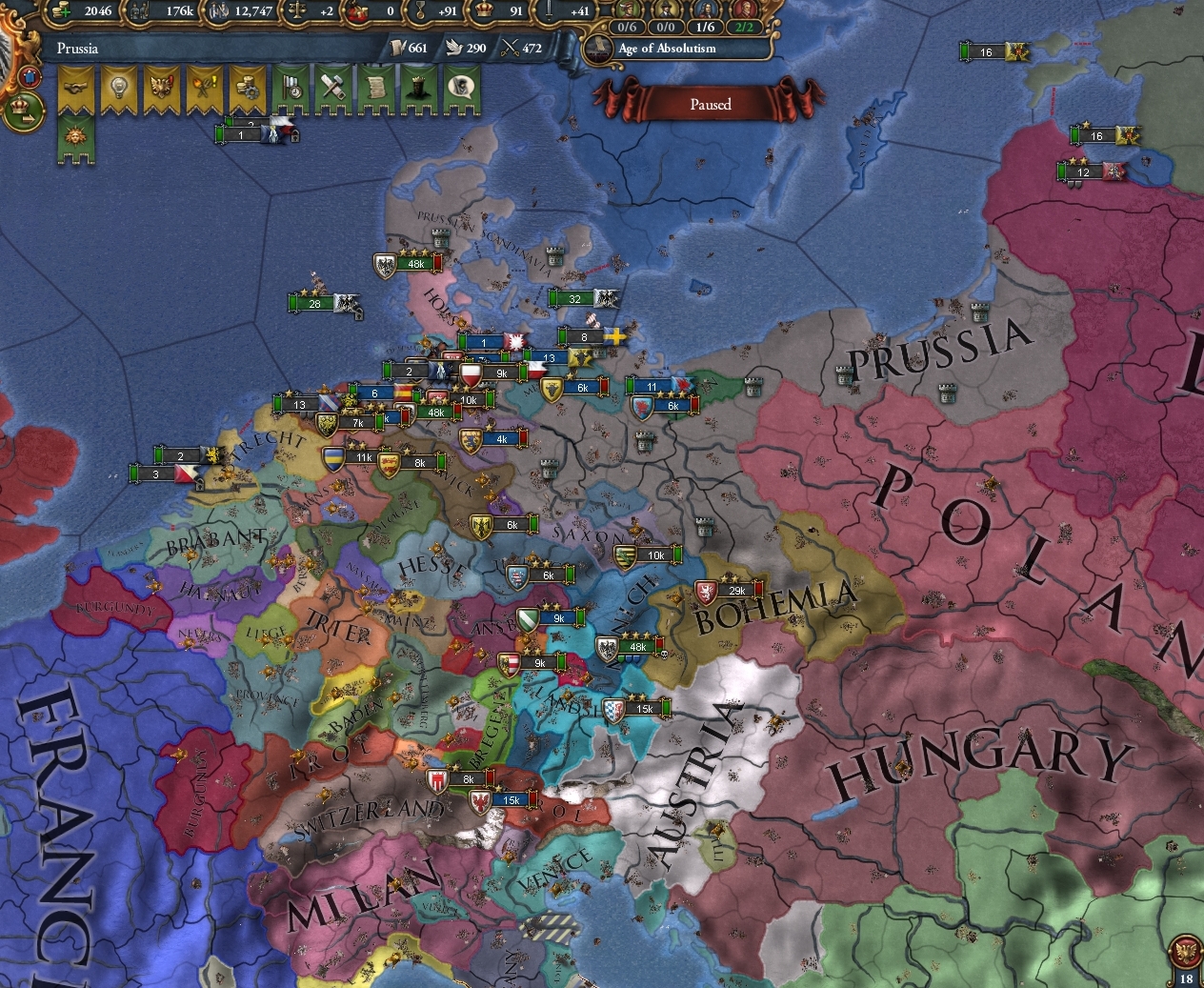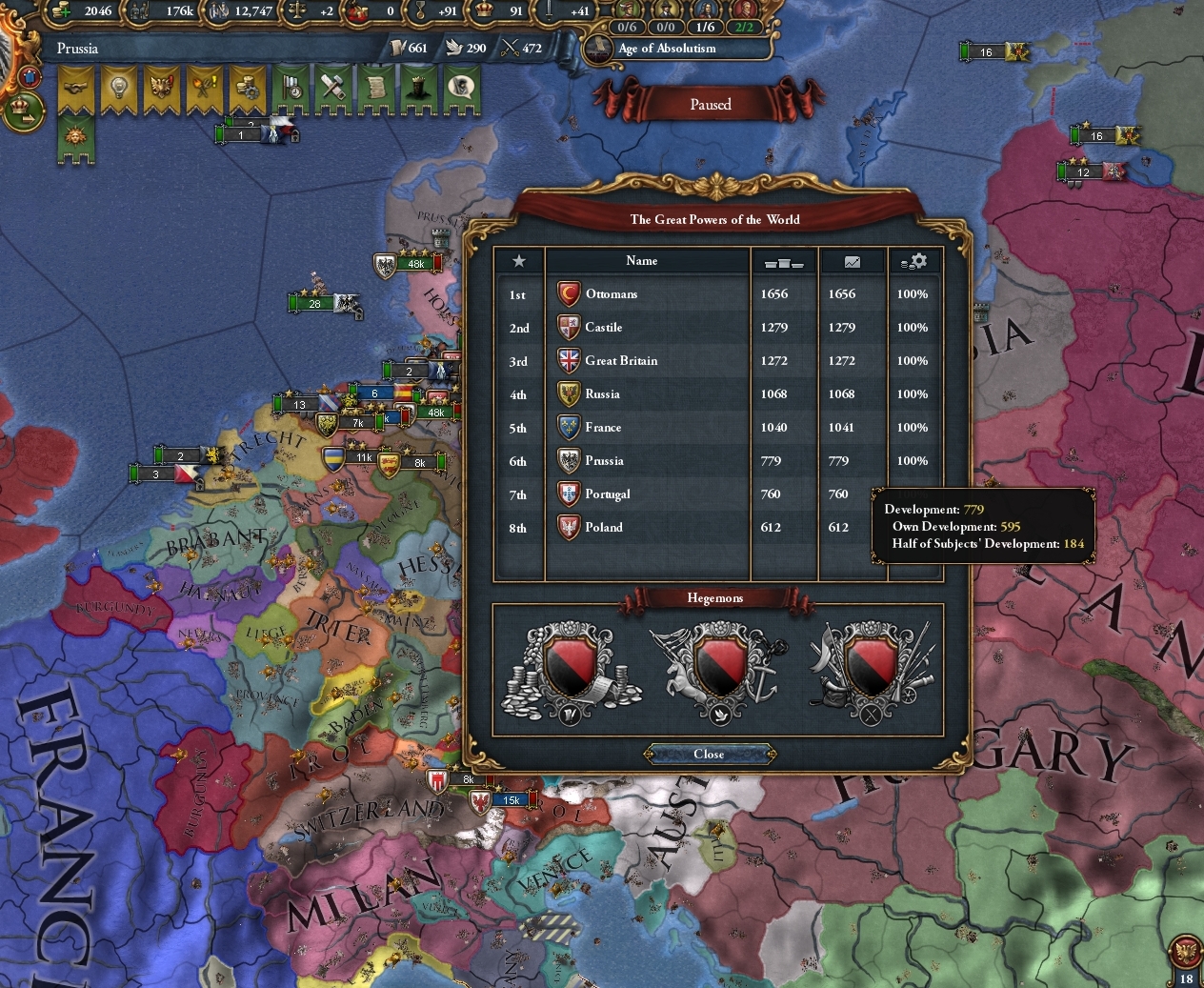Chapter 24: Colonial Ambitions (1591-97)
♥♥ ♥♥♥ ♥♥
A map of Leeuwarden, the capital of Friesland, from the late 16th century.
This chapter will take a more thematic approach to the five and a bit years between December 1591 and January 1597. First, the ‘Three As’: America, Africa and Australia.
♥♥ ♥♥♥ ♥♥
North America and New Friesland
Taking up the story just three months after the last chapter, there was of course little change in the overall situation surrounding the self-administering colony of New Friesland by December 1591. To the north and south, the expansionist French colonies had begun to hem the Frisians in. To the west, the Huron Confederacy and the Frisian-allied Hathawekela tribe limited expansion in that direction. To the southwest, the large Chickasaw Federation and beyond them, towards Central America, the Portuguese colonial presence lurked.
In 1593, a gradual rise in the liberty desire of New Friesland was being monitored by the home government. A central plank of colonial policy towards New Friesland was to keep them happy enough to not seek a break from the Fatherland, which tended to grow naturally with its increasing development.
A wider survey of the eastern half of North America in August 1596 showed the large territorial expansion of the French colonial presence, especially in the north, and the deepening northward encroachment of Portuguese Mexico into native lands. New Friesland remained hemmed in.
This remained true in early 1597, with the improvement in Friesland’s diplomatic reputation being the major factor in having reduced the net liberty desire of the colony from 37% to 34% over the last five or so years.
Africa
The period 1591-97 saw the general consolidation of the Frisian Gulf of Guinea, which was now hemmed in by Granada Guinea to its west, Castilian Congo to its south and impenetrable jungle to its east. Swellendam in the south was a small enclave within Castilian South Africa, while the recent colonisation of Lower Limpopo in the south-east continued.
In November 1593, Lower Limpopo gained ‘full city’ status, but local religious unrest sparked a rebellion in Inhambane in early 1595, with that town falling in February and Lower Limpopo in June. By the end of the year, a large rebel army held Inhambane and no relief had yet arrived from Friesland.
But that relief was not far off: by May 1596 an army of nine regiments had landed and under command of General Johan Ernst Donia, the colonies were liberated from Fetishist control by early June 1596.
Australia
Frisian colonisation of south-eastern Australia had begun in 1586 with the settlement of Wurundjeri, followed by Paredarerme in Tasmania in 1588. By December 1591, both these settlements remained in the early stages of development. Meanwhile, much of the eastern seaboard had already been colonised by Portugal, reaching down to Tharawal. As elsewhere, there was active competition for Frisia’s colonial ambitions in the far-flung corners of the New World.
Australia remained Friesland’s most active area of colonial expansion in these years. Paredarerme was the first settlement to reach autonomy in April 1592. This was followed by the settlement of Yuin in May 1594 (to head off further Portuguese expansion along the eastern coast) and the annexation of Kaurna in November 1594. Wurundjeri – the first and largest settlement – did not gain self-sufficiency until February 1595.
Kaurna and Yuin continued to be colonised in August 1596, aided by what passed for ‘humane’ colonial policies for the times. But Portugal conquered and annexed the tribal country of Peerapper in north-west Tasmania with a large army on 24 August; even as they suffered an occupation of much of their eastern colony of Portuguese Australia by the Yanuwa tribe.
The Counter-Reformation in Frisia
As it had been for years now, the main conflict in Friesland itself was one of ideas rather than open warfare. The Frisian government had consistently sided with the Counter-Reformation and although Protestantism was not outlawed as such – some Protestants even openly served in the Frisian government – Catholic missionaries continued to do spiritual battle with their Lutheran and Reformed/Calvinist opponents for Frisian hearts and souls.
In December 1591, around 61% of the population of Friesland professed the Catholic faith: a significant recovery from previous years. And Gent was close to being reclaimed for the True Faith as well. Lutherans and Calvinists held sway from south of the capital across east to Hamburg.
After Gent was converted back in January 1592 (once more increasing the strength of Catholicism in Friesland), the missionaries had switched to Oldenburg, which would be won back in September 1593. After that, the great (and expensive) task of reinstating Catholicism in Hamburg would soon be commenced.
As 1595 was ending, Hamburg was coming close to re-conversion but Cleve had once again succumbed to Protestantism in February that year, 33 years after their previous re-conversion to Catholicism. This saw a slight net decline in the strength of Catholicism at that time. Work was also being done to bring the majority heathens of Swellendam into the True Faith.
More widely, while Catholicism remained the primary religion of Western Europe, but the Reformed and protestant churches retained significant influence in many parts; Lutheranism more in the east and Calvinism the west and south.
The great work in Hamburg was completed in August 1596, bringing almost 50 years of Protestant domination there to an end. With it being too early yet to be able to launch missions in the remaining Frisian provinces in Europe, by early 1597 the missionaries had all turned to Africa – where the recent rebellion in the south-east had brought the dangers of local religious fervour into sharp relief.
The Economy, Military and Technological Developments
Around mid-1592, the surge in demand for new ships precipitated a very inopportune slow-down in Frisian naval construction that would last for another ten years.
New research discoveries came in two fields in 1593. The development of maritime law expanded the range of Frisian traders and made them more efficient, while artillery was significantly improved and new cannon brought into service with the Leger.
The chambered demi-cannon had been introduced and another two artillery regiments built since 1591. The army was by this stage at full supported capacity, while the navy still had some room for expansion (albeit hindered by those construction problems).
By 1595, missionary costs had temporarily spiked (mainly due to the costly conversion of Hamburg) to decrease the monthly balance from around 24 ducats in 1591 to just over 10 four years later. But trade continued to grow, with Frisian merchants working hard to transfer trade flows from Lübeck and the Ivory Coast to the Frisian ‘home node’ of the English Channel.
Military administration had also been improved by this time, while Frisian diplomatic and military technology continued to significantly outpace many competitors.
Between December 1591 and January 1597, the economy had generally expanded and the balance sheet had largely recovered from the Conversion of Hamburg. Income was up by 6.8%, even though expenditure total had risen further, an increase of 18.9%, a significant proportion of which related to increased army maintenance costs. Frisian development levels had also increased over this time, up from 383 in 1591 to 402 by the start of 1597, mostly in base tax and production.
Since 1593, just one more ship, a galleon, had been completed, though the navy continued to be dominated numerically by the trade-supporting frigate classes.
Friesland and the World
We come now to Friesland’s strategic circumstances and place in the world during this period. Potestaat Willem Frederick Japisk had held the highest office of the Republic since May 1585. In December 1591 he was 62 years old and well regarded as a leader and administrator. Many felt the Frisian Dream of Freedom to be in a safe pair of hands.
The government was stable, the economy doing well, there was a full treasury, plenty of reserve manpower and Friesland was at peace, with long-standing great power allies in France and Denmark.
The Ottomans remained the most powerful nation in the known world, followed by France and Russia. A mix of European colonial and continental powers followed, with Morocco remaining the North African representative in the group. No purely Asian powers (other than the Ottomans, whose empire straddled three continents) were on the list of the top eight ranked world powers. Friesland remained a powerful trader and a major world economy and naval power.
China, as commentators at the time had observed
[ ]
] , had apparently dissolved into a number of opposing fragments after the earlier collapse of the Ming Dynasty.
By August 1593, Friesland’s alliance network had undergone a fundamental change. For reasons lost to history, the long alliance with France had broken down with a formal diplomatic warning having been issued perhaps around mid-1593. While a truce had followed this breakdown, Friesland was clearly concerned about the now potentially hostile giant to its immediate south and in North America.
In response, new alliances had been forged with Austria (though bringing the Holy Roman Empire aboard, not classed as a great power at that time) and Savoy to balance this new French opposition, along with the retention of the durable Danish alliance.
As 1595 ended, Japisk remained in charge and was now regarded as an inspiring military leader as well. Friesland had once again begun to gradually increase its standing in the world (ie its score) and was now the second largest trade income in the world. Peace reigned for Friesland and throughout Europe.
But that peace was broken with the outbreak of a new European war between major powers in 1596. Poland was once again attempting to conquer Novgorod from Russia. By August 1596 this conflict was in its early days.
Otherwise, the great power standings remained steady and Friesland at peace (other than the recent zealot uprising in south-east Africa).
By January 1597, the Polish-Russian War had developed somewhat, but no field engagements had been fought. All the action had been siege work, much of it (but not all) on Russian soil.
Map showing known positions in the Polish-Russian War as at 16 January 1597, from the Polish perspective.
As can be seen above, the Polish-Lithuanian coalition had a significant advantage in overall army numbers but had already suffered significant attrition in its attempt to force the Russians into a surrender.
More widely, Friesland had been influencing and currying favours with its new ally Aragon for some time. Combined with Savoy, the hope was both these middle powers might be able to distract France on its southern flank if war broke out and they could be persuaded to join in on Friesland’s side. The other hope was that forces from both Denmark and Austria-Hungary might either deter France from any attack in the first place or provide eventual assistance if it came to blows.


















































































